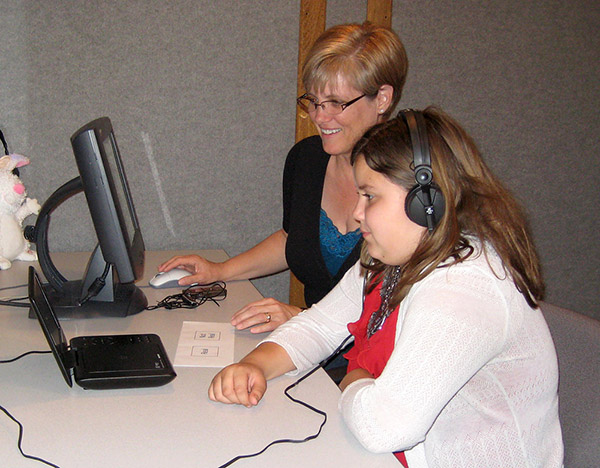2008 Clinical Research Grant, 1997 Student Research Grant in Audiology
Taking a Breath

Andrea Pittman's ASHFoundation grants were equivalent to life support. "The awards gave me a chance to pause and take a breath from all the grant writing that has to be done these days, and then a second breath to actually do the research that I proposed to do," she says. "And, of course, there's the confirmation that this work is important and that others believe I can do it."
Pittman's ASHFoundation Clinical Research Grant allowed her to perform two large data-based studies concerning, in the first investigation, how children with hearing loss manage complex environments like the classroom and, in the second study, how they learn new words and grow their vocabulary.
Pittman's studies looked at a particular type of amplification that reduces the effects of noise, making the sounds more comfortable and improving the signal-to-noise ratio. "We were trying to see if the small signal-to-noise ratio benefit that the children received affected their ability to manage their environments and to learn new words," she explains. "It's fascinating work."
It's also work that allowed her to receive a 2-year grant from the Hearing Industry Research Consortium to continue investigating the effects of advanced signal processing on cognitively demanding tasks. She's also applied for a grant through the Institute of Education Sciences to examine the benefits of advanced hearing aid features to children during the school day.
Pittman, an associate professor at Arizona State University, believes her ASHFoundation Clinical Research Grant "contributed to my promotion and tenure. It showed that I can fund my research and publish my work. The ASHFoundation grant was a welcome investment in my research making me a very grateful recipient."
And the investment will continue to pay off far into the future. The ASHFoundation funded only the beginning of Pittman's larger dream: "My concern has always been for children with hearing loss because they're a small part of the hearing-impaired population, only about 1%," Pittman says.
Typically, children are often given hearing aids that are designed for adults. Adults are able to use context and experience to fill in what they don't hear but children lack this ability. Adults are also able to advocate for themselves when their hearing aids are not functioning properly. Because children with hearing loss are often not in a position to do so, their hearing aids may not be sufficient for their needs at all times.
"I'd like to try out new signal processing in children first because if it benefits children it's very likely going to benefit adults as well," she says. "I'm hoping to use the information we learn from children with hearing loss to better serve adults with hearing loss too. Rather than designing signal processing for adults, I'd like to turn the tide and go the other way."
She's also hoping that the ASHFoundation will continue to thrive and to advance the future of scientific discovery, especially maintaining its current dual funding philosophy. "What I like most about the ASHFoundation is that they take small amounts of money and spread it broadly over a number of disciplines and a wide range of folks," Pittman says, "and they also offer larger, more substantive grants that function to drive certain fields of study forward. Both types of grants constitute money well spent and supporters of these endeavors can rest assured that their contributions are well invested."
View More Recipient Spotlights